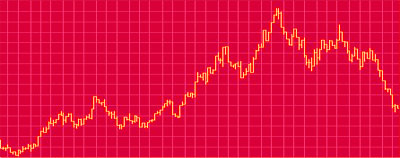
The new economic stimuli of President Bush is not likely to produce the promised effects in terms of preventing the further slowing down of economic growth and negative structural adjustment in the U.S. economy. Though reduced growth is a given, we may even see negative growth in the next two years in the U.S. economy and greater falls in the long term value of the dollar.
The reasons for this inefficacy are;
(i) The magnitude of the increased spending which is based on a tax rebate and tax exemption of $140-150 billion which is about one percent of the U.S. GDP. In real terms, based on the figures from a similar package enacted after the 2001 recession, between one- and two-thirds of this amount will be translated into consumer spending. The short fall in the private housing market and the fall in durable consumer goods are estimated to be in excess of three hundred and fifty billion dollars. The demand-side effect of the proposed package will be too small to stimulate consumer spending in these sectors and generate enough momentum to fight off recessionary pulls,
(ii) The present package is based on assumptions similar to those used to develop the 2001 and 2003 stimuli packages which were designed to cope with the deflationary effects of the mini bursts in the stock market bubble. The present falls in consumer spending and investment demand are caused by the burst in the housing market bubble which is fundamentally different.
The property market boom was the brain child of Alan Greenspan, the former president of the Federal Reserve who after the 2001 recession and the pursuant reluctance of equity investors to resume their engagement in the U.S. stock market decided to reverse the negative effects of the burst in the stock prices through the easing of the money supply and de-regulation in lending in the private property market. This refocus of the credit policy in the banking on the lower end of the market was intended to create a new asset-based growth in household spending in the U.S. economy which was fundamentally debt-driven.
The boom in the property prices in the U.S. between 2001 and 2006 helped to raise consumer spending which was not supported by the raise in their earnings. During the same period there was unprecedented growth in the national debt fuelled by the government deficits, short falls in the external trade accounts and rising household borrowings.
The rise in household spending was mainly fuelled through increased borrowing against the higher property prices which enabled owners to increase their debt even though their income did not always warrant the issuance of the new loans and yet on paper and on the balance sheets of lenders their net asset value showed a positive balance and a growth in the new value because of the bubble in the property prices.
What was ignored during the ‘golden’ years of Greenspan era was that a significant part of the inflationary pressure in private dwelling market was fuelled by demand from first-time buyers who had credit ranking of poor to very poor (sub 700 points) and yet they were able to obtain mortgages. At the margin, between one-quarter and one-third of these new buyers would have been refused mortgages on the basis of their income stability and their net earnings in the pre-2001 financial regime. It was the gradual but the rising default of this group of borrowers that instigated the first wave of sell-offs of the sub-prime mortgages by the U.S. banks to their European and Asian banks and financial institutions who had less information about the true value of the existing mortgages and the spread of risk in this segment.
American banks diversified their risk exposure in the U.S. sub-prime market through reselling of their bad (un-retrievable) mortgages to the rest of the world which deepened the down side of dollar-denominated involvement for foreign investors.
For all these reasons and the fact that the mortgage market is primarily a debtors/borrowers market (vis-à-vis the stock market which is an investors/savers market) in which individuals have little liquidity to absorb rising insolvencies we should expect a further spread of the decline in the property prices given the fact that we still do not know the true value of sub-prime mortgages which could be in excess of one trillion us dollars,
(iii) Existing statistical correlation between previous bursts in property prices and general economic activity suggest a more pronounced and lasting association between booms and busts and price falls than those detected in the stock market prices and bursts in the bubbles in the equity markets,
(iv) And finally, all major banking crises in the postwar period coincide with collapses in property prices. The volatility in the banking liquidity and the hardship that was caused to households in the late 1980s in England, Switzerland and Japan (albeit was the commercial property prices) indicate a period of three to five years during which we may see even negative growth and painful structural adjustments which may contribute to the further transference of the economic gravity from West to East (China, India, and their neighbouring economies).
The real legacy of the Bush’s presidency at the end may not be the failure of its policies in Iraq and Afghanistan or the War on Terror but the fall of the U.S. dollar from being the world supreme currency to one of the major currencies.
Given the deficit-ridden history of the U.S. economy this change may not be such a bad outcome if it encourages the U.S. to subjugate its economy to the same budgetary disciplines that it has advocated other countries directly or indirectly (through the IMF and the World Bank) to embrace.
After all living on ‘borrowed money’ for nations may be as dangerous as living on borrowed time has been for politicians. Economics governs the weak and the strong, not always in equal measures but its rule is inescapable.






